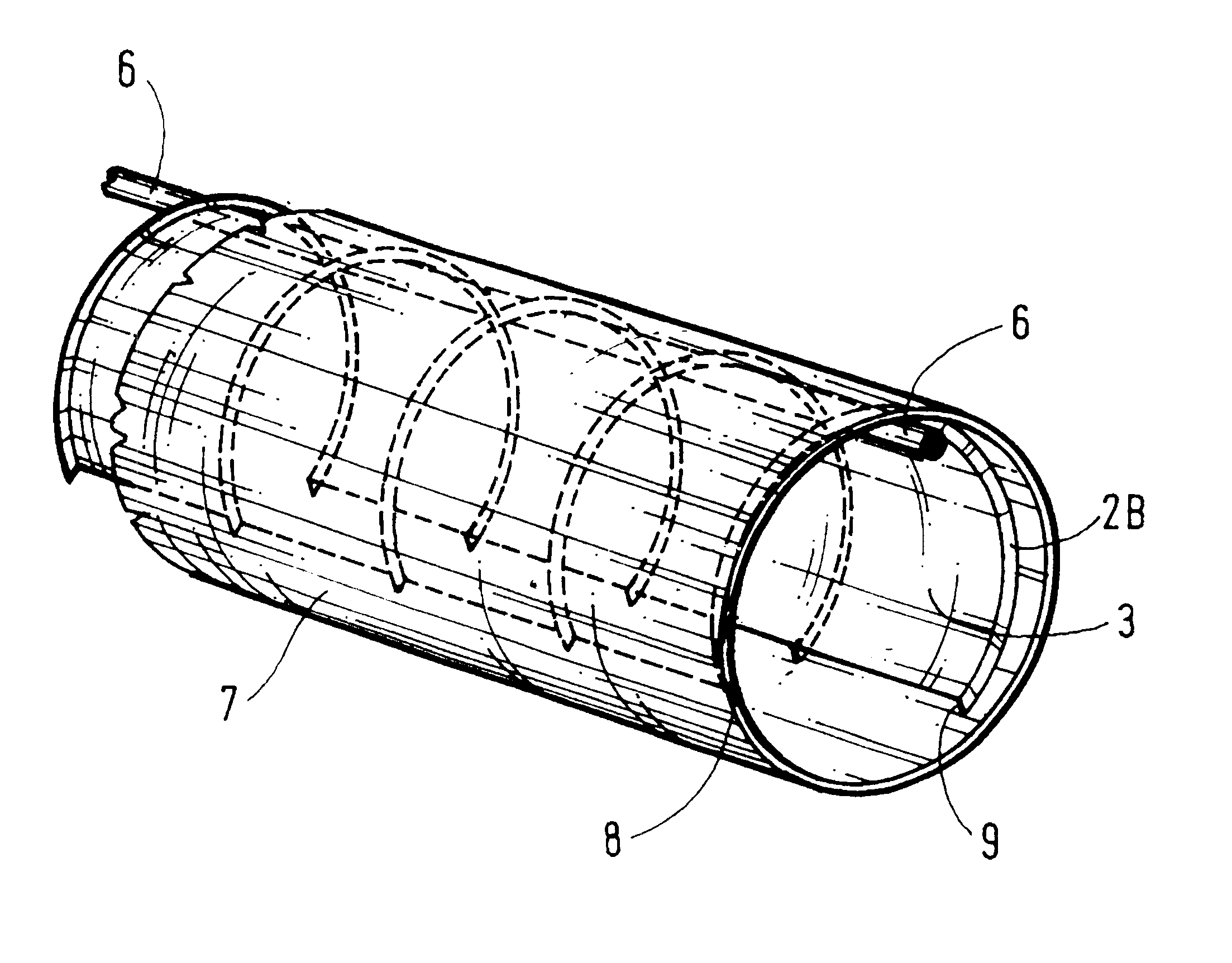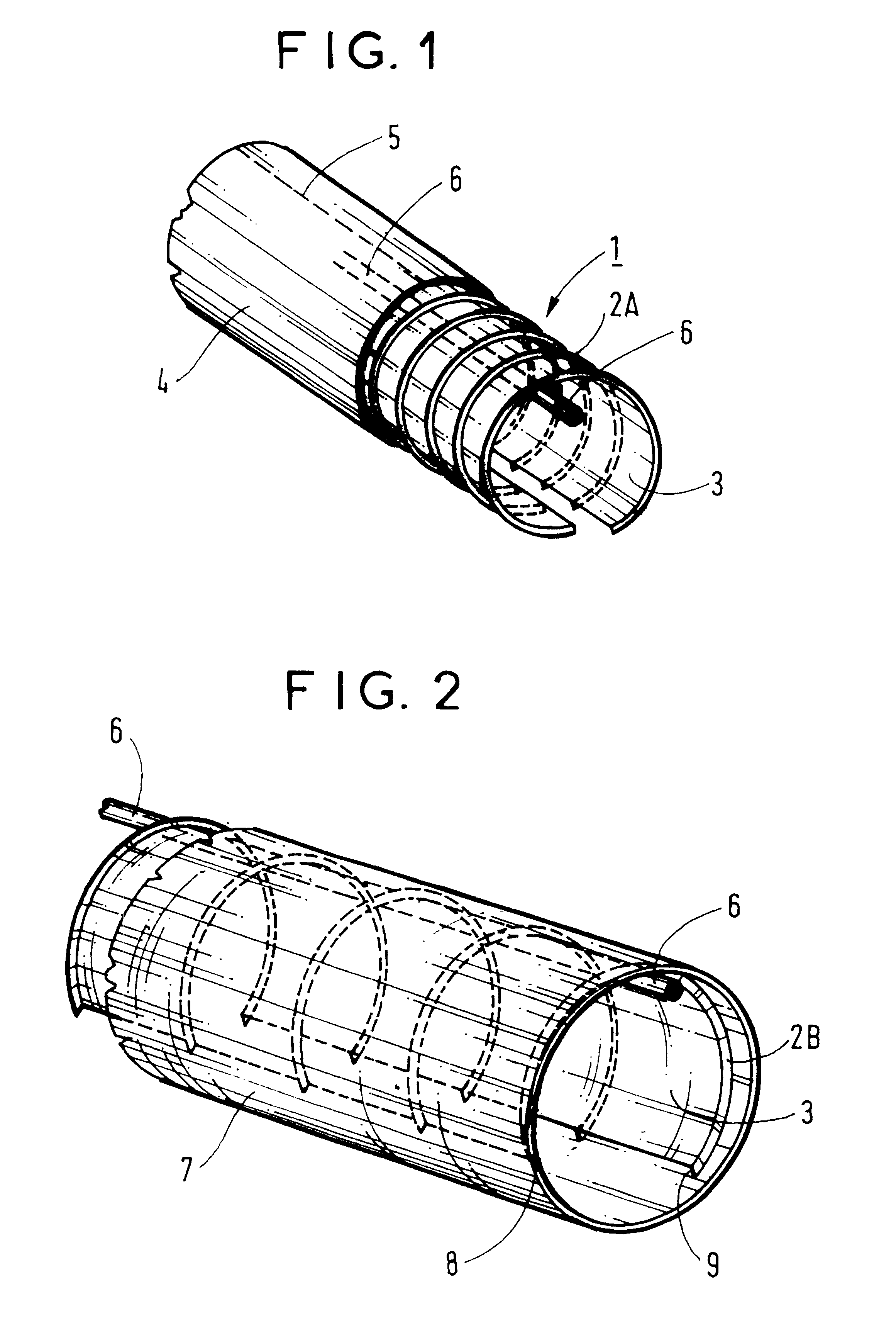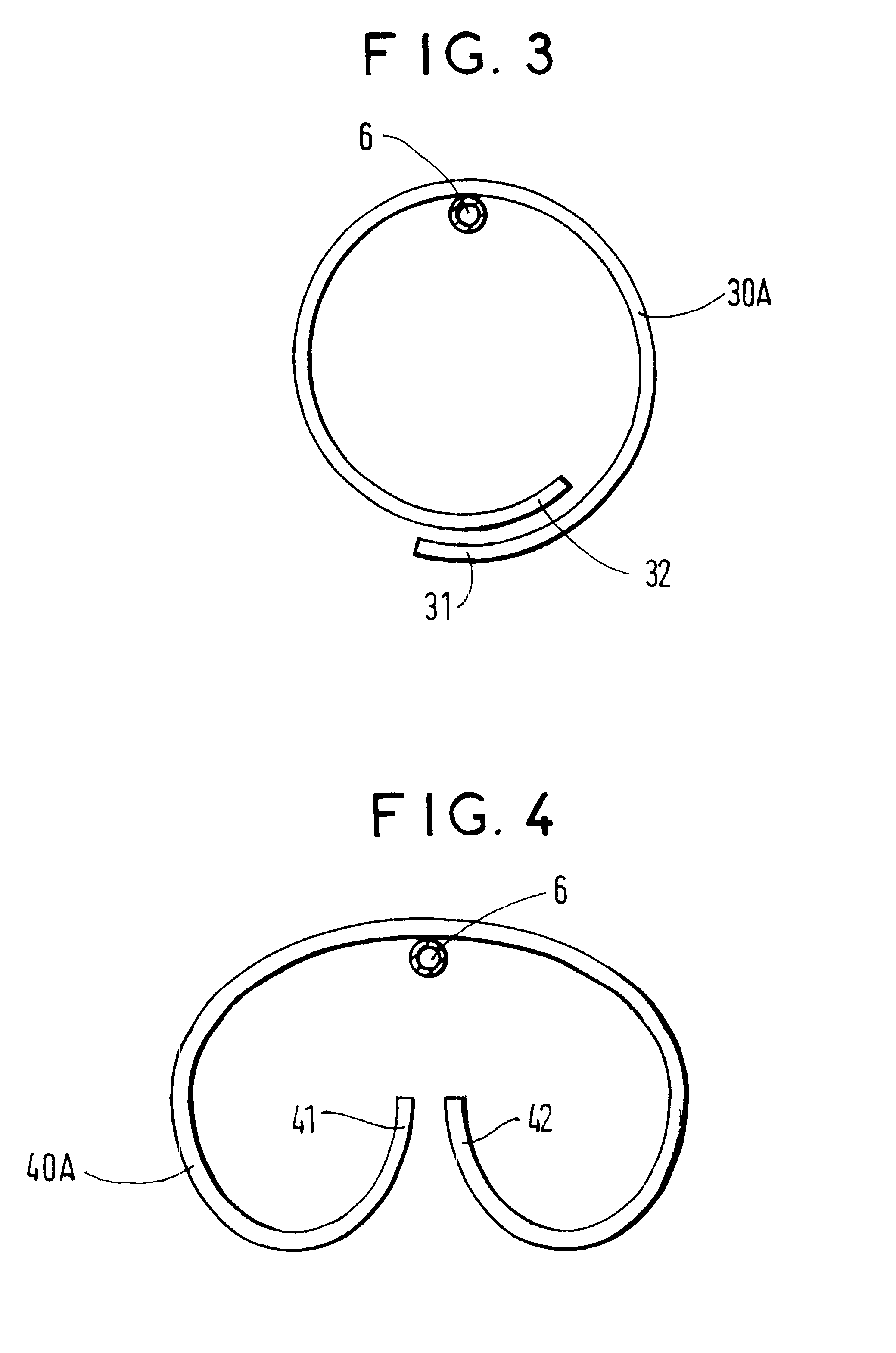Device for fixing a tubular element in an inaccessible cavity
a tubular element and cavity technology, applied in the direction of cable installation in underground tubes, rod connection, instruments, etc., to achieve the effect of quick and simple installation and inexpensive installation
- Summary
- Abstract
- Description
- Claims
- Application Information
AI Technical Summary
Benefits of technology
Problems solved by technology
Method used
Image
Examples
Embodiment Construction
FIG. 1 shows a device 1 of the present invention, made up of hoops 2A in a contracted configuration, and interconnected by a membrane 3. The hoops 2A are metal strips made of spring steel and whose thickness is less than their width. For example their thickness lies in the range 1 mm to 5 mm and their width lies in the range 2 mm to 50 mm. The hoops 2A are held in this position by a sheath 4, e.g. made of a plastics material, and shown in part. The sheath 4 has a tear line of weakness 5 along which tearing takes place from a planned break point. In this example, the tubular element 6 is fixed to the hoops and acts as a longitudinal support for the device 1. In this example, the tubular element 6 is a corrugated hollow tube made of steel and designed to contain cables, in particular optical fiber cables.
The device 1 is inserted into a duct 7 as shown in FIG. 2. After breaking and removing the sheath 4, the hoops 2B take up a deployed position. The hoops 2B then abut against the wall ...
PUM
 Login to View More
Login to View More Abstract
Description
Claims
Application Information
 Login to View More
Login to View More - R&D
- Intellectual Property
- Life Sciences
- Materials
- Tech Scout
- Unparalleled Data Quality
- Higher Quality Content
- 60% Fewer Hallucinations
Browse by: Latest US Patents, China's latest patents, Technical Efficacy Thesaurus, Application Domain, Technology Topic, Popular Technical Reports.
© 2025 PatSnap. All rights reserved.Legal|Privacy policy|Modern Slavery Act Transparency Statement|Sitemap|About US| Contact US: help@patsnap.com



